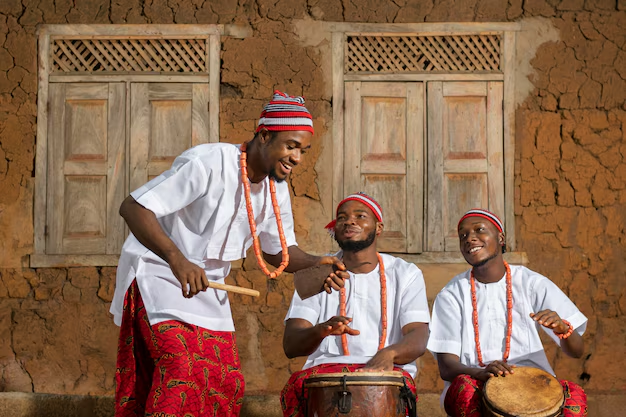Introduction: What Is Hijabhoojup and Why Is It Important?
Have you ever heard of the term hijabhoojup and wondered what it means? You’re not alone! Whether you’re curious about its cultural significance or simply want to learn more, you’ve come to the right place. This blog post will explain everything you need to know about hijabhoojup, from its origins to how it’s practiced today.
We’ll break it down into simple, easy-to-understand language, without any confusing jargon. By the end of this post, you’ll have a clear understanding of hijabhoojup, and maybe even a fresh perspective on this fascinating tradition.
What Exactly Is Hijabhoojup?
Let’s start with the basics—what is hijabhoojup? The word itself might sound unfamiliar, but it refers to a deeply rooted tradition, often connected to cultural or religious practices. Hijabhoojup typically describes a unique way of modest dressing, blending cultural attire with a specific kind of head covering or garment. In some places, it’s seen as a way to express both personal identity and cultural belonging.
While hijab in general is known for being a headscarf worn by Muslim women, hijabhoojup can go beyond that definition, including more elaborate or regionally specific styles. It’s not just about covering one’s hair; it often symbolizes modesty, respect, and sometimes, even personal power.
The Cultural Significance of Hijabhoojup
Different cultures have their own versions of hijabhoojup, and each one adds layers of meaning to the garment. In some regions, this attire is a key element of a woman’s identity, closely tied to local customs. In these communities, hijabhoojup represents more than just a fashion statement—it’s a way to stay connected to their cultural roots.
Beyond that, hijabhoojup has also become a symbol of solidarity for many women around the world. Whether worn for religious reasons or as an expression of personal choice, the hijabhoojup is a way for women to claim ownership of their identity.
Hijabhoojup in Modern Society: More Than a Headscarf
In today’s world, hijabhoojup has evolved. No longer confined to traditional forms, people are now incorporating more modern designs and fabrics into their hijabhoojup attire. For some, it’s an important part of their daily wardrobe, while for others, it’s reserved for special occasions.
One of the most interesting things about hijabhoojup is how it allows women to blend tradition with contemporary fashion. It’s not uncommon to see hijabhoojup styles paired with jeans, flowing skirts, or even sharp business suits. This versatility has made it more than just a religious garment—it’s now a fashion statement, too.
How to Wear Hijabhoojup: A Step-by-Step Guide
If you’re new to the concept of hijabhoojup, you might be wondering how to wear it. While different regions and communities have their own way of styling it, here are some general tips for getting started:
- Choose the Right Fabric: For everyday wear, light, breathable fabrics like cotton or linen work best. For formal events, silk or satin hijabhoojups can add elegance.
- Find Your Perfect Fit: Make sure the fabric isn’t too tight or too loose. It should comfortably cover your hair and neck without causing discomfort.
- Experiment with Colors and Styles: There’s no one-size-fits-all. Don’t be afraid to mix it up by trying different colors, patterns, and layering techniques.
- Use Accessories: Pins, brooches, or clips can help keep your hijabhoojup in place and add a personal touch to your look.
Why Do Women Wear Hijabhoojup?
There are several reasons why women choose to wear hijabhoojup. While it often serves a religious purpose, for many, it’s also about personal expression, modesty, and even empowerment. Some women feel that wearing hijabhoojup allows them to focus more on their internal qualities rather than their appearance.
Others see hijabhoojup as a way to honor their cultural heritage. It’s not just about covering up—it’s about embracing an identity that has been passed down through generations.
Debunking Myths About Hijabhoojup
Despite its long history, hijabhoojup has often been misunderstood. Here are a few common myths that need to be debunked:
- Myth #1: Women are forced to wear hijabhoojup.
In reality, many women choose to wear hijabhoojup of their own free will. It’s a personal decision, one that reflects their own values and beliefs. - Myth #2: Hijabhoojup is only about religion.
While hijabhoojup has religious roots, many women wear it for cultural or personal reasons, too. - Myth #3: Hijabhoojup is outdated.
On the contrary, hijabhoojup has evolved with time. Today, it’s a blend of traditional and modern styles, proving it’s here to stay.
Conclusion: Embracing Hijabhoojup in Everyday Life
Hijabhoojup is more than just a piece of clothing—it’s a way for women to express themselves, connect with their heritage, and make a statement. Whether worn for religious, cultural, or personal reasons, hijabhoojup represents something different to every woman who wears it.
So, whether you’re looking to learn more about the tradition or trying to find your style, there’s no doubt that hijabhoojup holds deep meaning. It’s a garment that goes beyond fabric and fashion, standing as a powerful symbol of identity, respect, and choice.
FAQs About Hijabhoojup
Q: Is hijabhoojup only for religious purposes?
A: No, while it has religious significance for some, many women wear hijabhoojup for cultural or personal reasons as well.
Q: Can I wear hijabhoojup if I’m not religious?
A: Absolutely! Hijabhoojup can be worn by anyone who feels a connection to its cultural or personal meanings.
Q: How is hijabhoojup different from a regular hijab?
A: Hijabhoojup often refers to specific regional styles or more elaborate forms of modest dressing compared to the traditional hijab.
Q: Are there specific rules for wearing hijabhoojup?
A: While some religious guidelines exist, many women adapt hijabhoojup to suit their personal comfort and style.
Q: Can hijabhoojup be fashionable?
A: Yes! Hijabhoojup is both traditional and trendy, and many women incorporate it into modern fashion.

